Episode 251: Maria Theresa of Austria, Part One

Destined from her cradle for a seat on the throne, Empress Maria Theresa of Austria had to fight both the prejudices of her age and some of the greatest warriors of the time to secure her empire. Her life was so large, it’s going to require two episodes! In this one, we begin with a little background on her family, you may have heard of them? The Habsburgs? They of a 700-year dynasty? There were a lot of wars, fluid country lines, alliances, and lands that extended across modern-day Europe that helped shape the world that Maria Theresa was born into, and we give you an outline of that history.
Maria Theresa Walburga Amelia Christina was born on May 13, 1717, at her family home, Hofburg Palace, in Vienna, Austria. Her father was Holy Roman Emperor Charles VI, and her mother was Elisabeth Christine of Brunswick-Wolfenbuttel. Maria Theresa was the oldest of two surviving children, both daughters, which sent the lives of her parents, her mother especially, into turmoil.

An heir! They need an heir! And, oooof, they tried and the cockamamie methods to get that male child were extreme. Also extreme was her father’s methods to extend the line of succession to his daughters on the chance that a son never survived. When it looked like that son wasn’t going to come, he made sure that his eldest daughter was as prepared as possible to lead the family and control their lands. This meant an education (not exactly that of a lad, but pretty close) and lining up a strategic betrothal in the form of Duke Francis Steven of Lorraine.

Maria Theresa was only 23 when Papa Karl (that’s what we call him, there are a lot of people with the same name in this story) passed away. At that point, not only was she married to a man who understood his place, but she was ready for the responsibilities ahead of her. She, not her husband as some believed would happen, stepped into the ruling role which was pretty unusual for both the family and the times. But, as prepared as she was, she was in for some pretty rough times at the beginning.

Maria Theresa’s natural intelligence helped her learn skills of diplomacy, military strategy, and how to juggle the many varied challenges of her enormous territory and responsibilities…all while being pregnant and giving birth to 16 children, 10 of which survived to adulthood. She streamlined and centralized her government, wheeled and dealed with allies, and built a standing army to protect her borders (usually from a nearby ruler who history remembers as Frederick the Great, King of Prussia.) Heck, she even got the vampire scare under control. Yes, vampires.

We cover her life up through the first 20 years of her rule but there’s so much more ahead in Part Two.
TIME TRAVEL WITH THE HISTORY CHICKS
Media recommendations will be on the shownotes for Part Two, but to tide you over we talked a bit about two contemporaries of Maria Theresa: Madam de Pompadour (from 2011 when we were just baby podcasters) and Catherine the Great, Part One and Two. Maybe go give their episodes a listen to learn their incredible stories!
Also, we have a Pinterest board for every episode, here is Maria Theresa’s!
Episode 250: Austria Travelogue, 2024

For a few weeks a year, we head out of our ordinary lives to take a Field Trip. Like any decent Field Trip, we don’t go alone and offer up the opportunity to join us to you, Dear Listeners! This June we headed to Austria with 50 people who would become friends in a very short time. We toured Vienna, Salzburg, Hallstatt, and several locations in between with an accent on history and this week we opened up our mics to let those traveling with us tell their stories.
read more…Episode 249: Gertrude Bell

Gertrude Bell, a daughter of privilege took her enormous intelligence, unfathomable bravery, and an entire set of Wedgwood china into the uncharted parts of the Middle East, making maps, discoveries, and friends along the way. Her work helped pave the way for the establishment of the modern country of Iraq.
Gertrude Margaret Lowthian Bell was born on July 14, 1868, in County Durham, England. She was the first child and only daughter of Sir Hugh Bell and Mary Shields Bell, and, after her mother passed away, was raised since childhood by her stepmother, Florence Olliffe Bell. Gertrude grew-up in a wealthy family of fairly progressive thinkers and was educated at Queens College and Oxford University (where they had only recently begun enrolling women and still didn’t give them actual degrees.)
She did follow some convention and, after being denied marrying the man she loved for the conventional reason of him not making enough money, she did her conventional debutant time doing traditional debutant activities. But, once she had aged out of “marriageable” and became “chaperone” age, her life really got going.
Gertrude traveled extensively for most of the rest of her life. And not all posh, typical travel (although she did travel with an entourage and glamping supplies) we’re talking about activities like mountain climbing and desert wandering in the Middle East. This was her favorite area to explore and live, made easier by being fluent in Arabic and not holding back from speaking her mind.
Her adventures were numerous, at times her numerous friendships were lifesaving, and her documentation of the people she met and the lands she loved aided in the establishment of modern-day Iraq and divvying up the freshly fallen Ottoman Empire, and guiding Great Britain through WW1.
Gertrude Bell, CBE: author, adventurer, archaeologist, museum creator, unofficial but effective diplomat, political advisor, and a woman who put (parts) of convention aside to live her life by her own rules died on July 12, 1926, at her home in Baghdad. She was 57 years old.
TIME TRAVEL WITH THE HISTORY CHICKS
Books!




Web!
An entire site dedicated to her: The Gertrude Bell Society
A timeline of her life from Women in Exploration.
Despite what appears to us as an easy yes, Gertrude was not in favor of women getting the vote, she was (as were many in her class) anti-suffrage. Find out why in this article from a Newcastle University blog, dig into their archive on her, and more about her life in another from the same school.
This is the museum that she helped establish, The Iraq Museum.
A discussion about her death from an overdose of sleeping pills.
The history of “Cook’s tour” (which isn’t about someone who cooks going on a tour.)
An explanation of the Balfour Declaration after WWI
Moving Pictures and Audio!
Sigh. Watch it if you must, but it’s not a favorite over here.

Instead, watch this documentary series from PBS, Letters From Baghdad, it’s much…much better.

And if you know Greta Gerwig, maybe she should get her eyes on Gertrude’s story.
We have a Pinterest Board for every subject! Check all of them out on Pinterest!
Break music: Spy vs Spy by Sound of Seventy-Three. End music: Intrepid by Love Amplifier
(used by permission from Ilicense Music)
Episode 248: Mary Cassatt

Mary Cassatt may be best known for her paintings of women and children, but she lived a long life full of much more: bold moves, societal-norm evasion, adventure, a big family, and a bigger personality.
Mary Stevenson Cassatt was born on May 22, 1844, in Allegheny City, Pennsylvania the fourth of five children of Robert Simpson Cassett and Katherine Johnston Cassett. Her parents were quite wealthy and had a sort of wanderlust approach to residences, moving the family quite a bit, even to Europe for an extended time. Mary grew up multi-lingual, very curious, and very, very interested in becoming an artist.
She was able to begin working toward that goal at 16 when she entered the Pennsylvania Academy of Fine Art in Philadephia and continued when she (with her mama as a chaperone) moved to Paris in 1865 when she was 21 years old. She built her skills by copying masters’ paintings in the Louvre, studying with artists in Paris, and upped her game when she began to be selected to show at the prestigious Le Salon des Beaux Arts in Paris. She continued her education by traveling throughout Europe with friends to study the art of the area, practice, and in one case, complete a commission that made her the Belle of Parma for a season. She never stopped that education.

Mary joined a small group of artists in Paris who were thinking the same thing that she was: there is another way to paint than the one, traditional way approved by the Salon judges. These folks even had a name for their merry band of artists: The Impressionists, and Mary joined them when she was 33 in 1874. Big names now like Degas, Monet, Pissaro, Renoir… while Mary wasn’t the only woman, she was the only American. With the Impressionists, she painted scenes of everyday life (in places where she, as a woman of a certain class, was allowed to go) and, eventually, began the work she is most famous for: women and children.



For her entire life, Mary was always learning, always practicing, and always adapting her art as her mind, her life, and her body began to change. She made the decision to never marry, and (no shock) she had a full life of family and friends. In addition to becoming a world-renowned painter and printmaker, she assisted many people in the role of art consultant, helping them amass their art collections of various styles and artists, and made herself available to advise and support young artists.
Not only did Mary achieve her dream of an art career, she helped others achieve theirs.



Mary Cassatt died at her home, Chateau de Beaufresne in Le Mesnil-Theribus, France on June 14, 1926. She was 82 years old. She left behind an enormous body of work, much of which was in private collections and has since been donated to museums around the world.
****SHOWNOTES UNDER CONSTRUCTION, PLEASE COME BACK A LITTLE LATER FOR THE COMPLETE MEDIA LISTINGS****
Time Travel With The History Chicks
Books!






Web!
The Library of Congress has a listing of places where you can (virtually) see Mary’s work. We heart the Library of Congress.
There is a lot of information and a collection of (most) of her work at MaryCassatt.org.
Why did we keep saying that Impressionist painting was so radical? Here’s an article about that in The Week.
Very cool resource: Pieces Mary applied to be shown at the Salon in Paris, by acceptance and rejection. Impressionism.nl (and lots of other artists’ work, too!)
If you happen to be in Philadelphia at tea time, here’s the Mary Cassatt Tea Room!
Moving pictures and Audio Creations!
A couple of podcasts we liked; The Lonely Palette, E21, and The Art History Babes, Impressionism
And we await a biopic (you know how to pronounce that, right?) let’s get on this film people, Mary had a big personality and lots of life material for a movie!
End song: Magic by Leht Mo Joe
Episode 246: Althea Gibson, Part Two
When we left Althea in part one, she was 24 and after years of training, practice, competition, and a village of supporters working with her and behind the scenes, she was finally invited to the American Lawn Tennis Association Championship at Forest Hills Tennis Stadium in New York in 1950! Getting to this national tournament wasn’t easy, but few things in Althea’s life are.
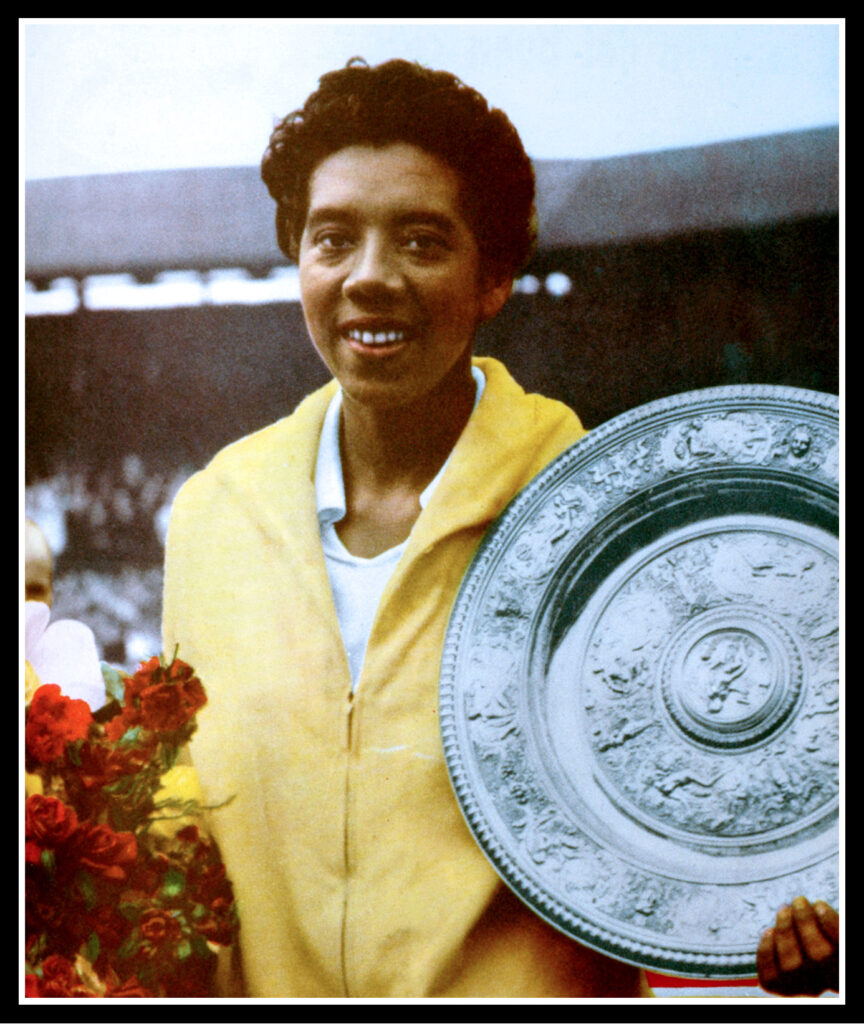
It wasn’t easy to get to Forest Hills, or through college, or onto a short-lived career as a college physical education teacher…it wasn’t even easy to get her application through to become a WAC, a member of the military Women’s Army Corps, a position that never fully panned out for Althea. She was floundering in her life and ready to give up tennis when she was tapped by the US State Department for a Goodwill Tour to Asia, along with three other tennis players.
This travel led Althea to travel on her own throughout Europe to play in tournaments, improve her game, and play with the best competition in the world! Soon she became that competition for others, winning her first major tournament in France then on to the oldest in the world: Wimbledon. She cracked through racial barriers, gender barriers, and economic barriers to win scores of tournaments including 11 “Grand Slam” tournaments: five singles titles, five doubles titles, and one mixed doubles title.
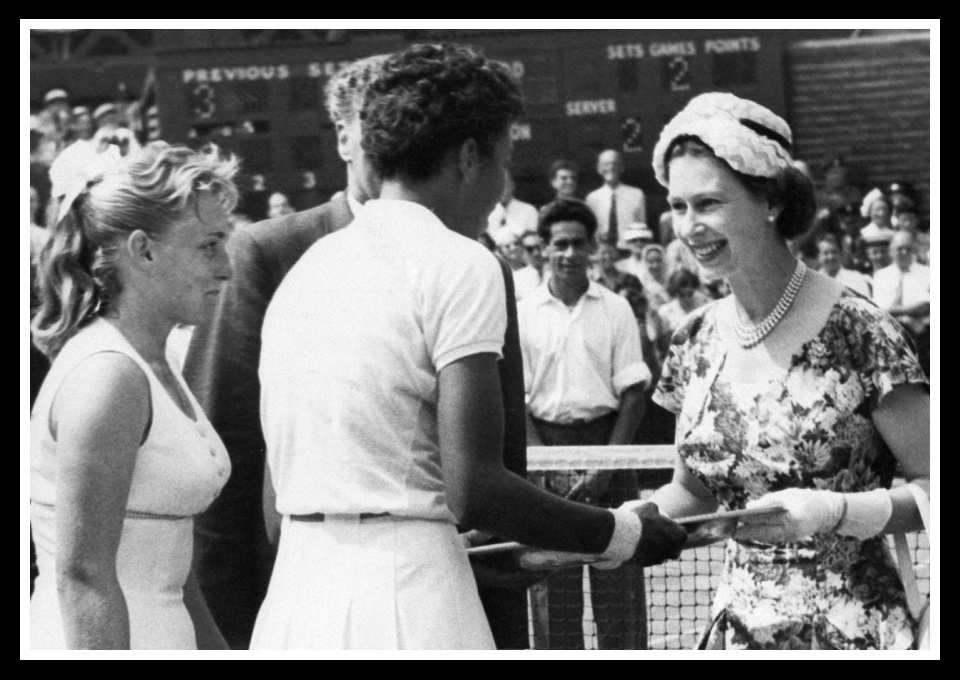

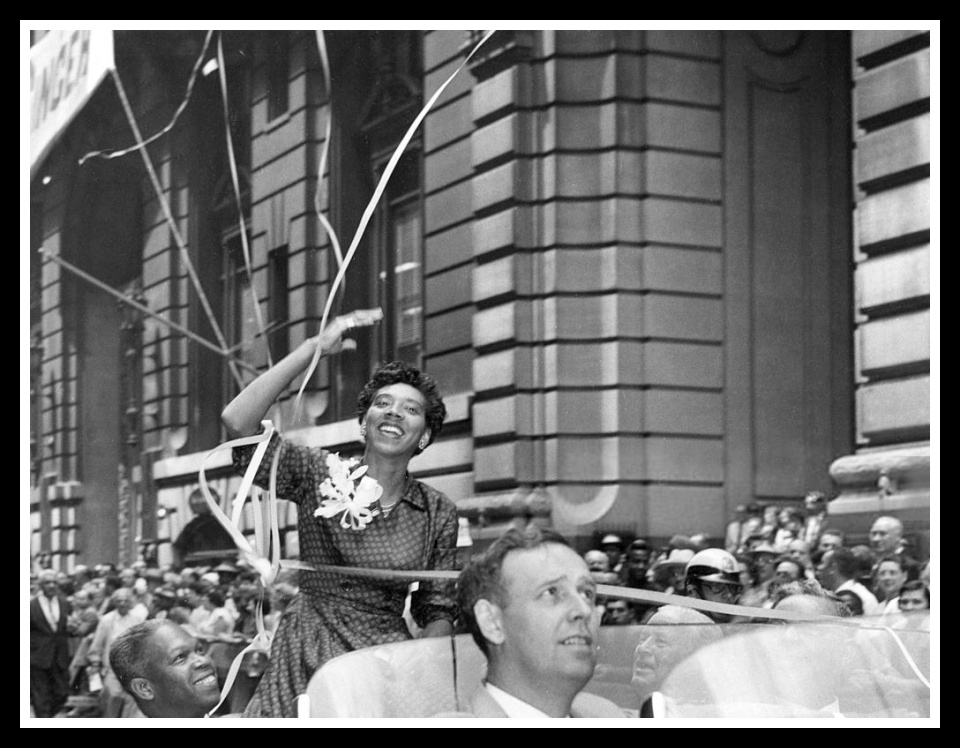
But competitive tennis in the 1950s was for amateurs only, and Althea couldn’t support herself playing the game she loved by competition, so she retired in 1958 and crafted an interesting life recording an album, appearing twice on the Ed Sullivan Show, writing an autobiography, acting, and modeling for ads until she landed a five-year run touring with the Harlem Globetrotters to play exhibition games. When that ended, she began to hit a different type of ball when she toured with the Ladies Pro Golfer Association (LPGA.)
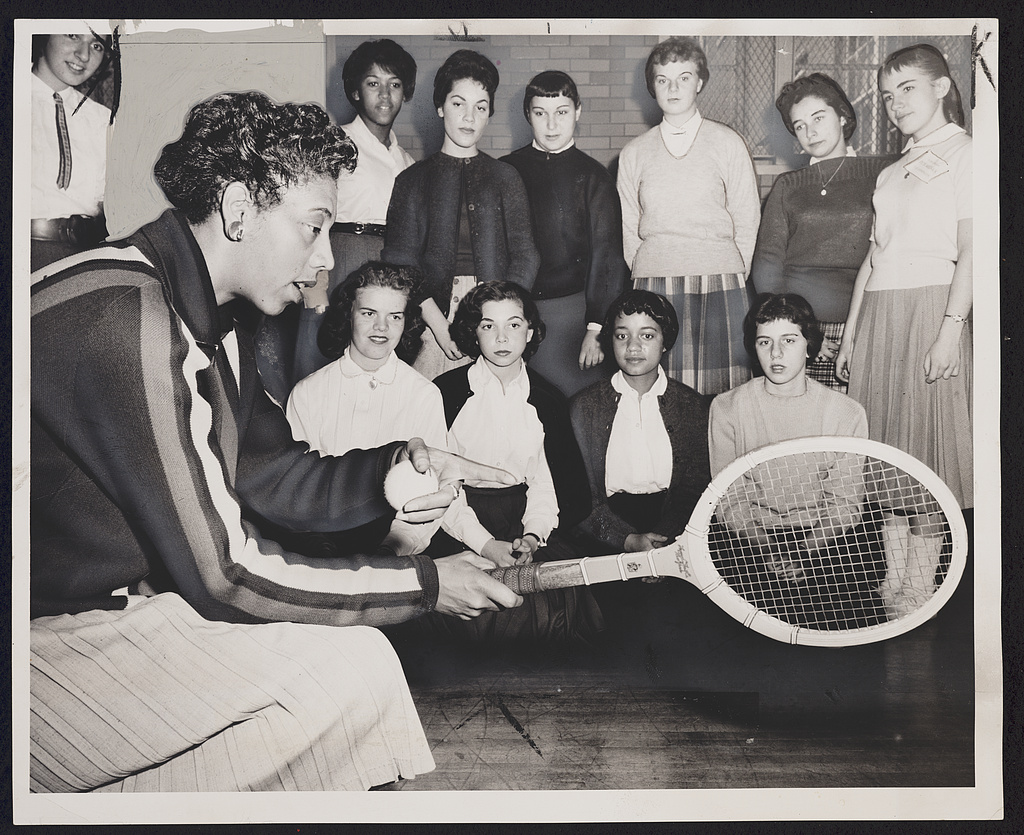
The remainder of her life was full of struggles and successes…just like the years that came before. Althea Gibson died on September 28, 2003, she was 76 years old.
Time Travel With The History Chicks
Books!
Biographies we liked:


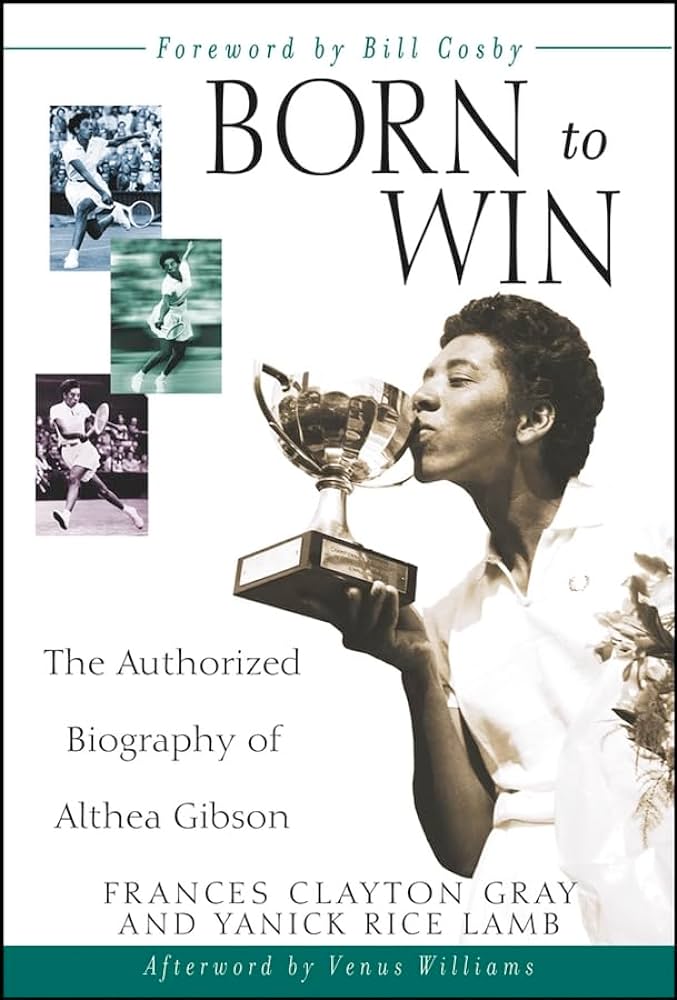

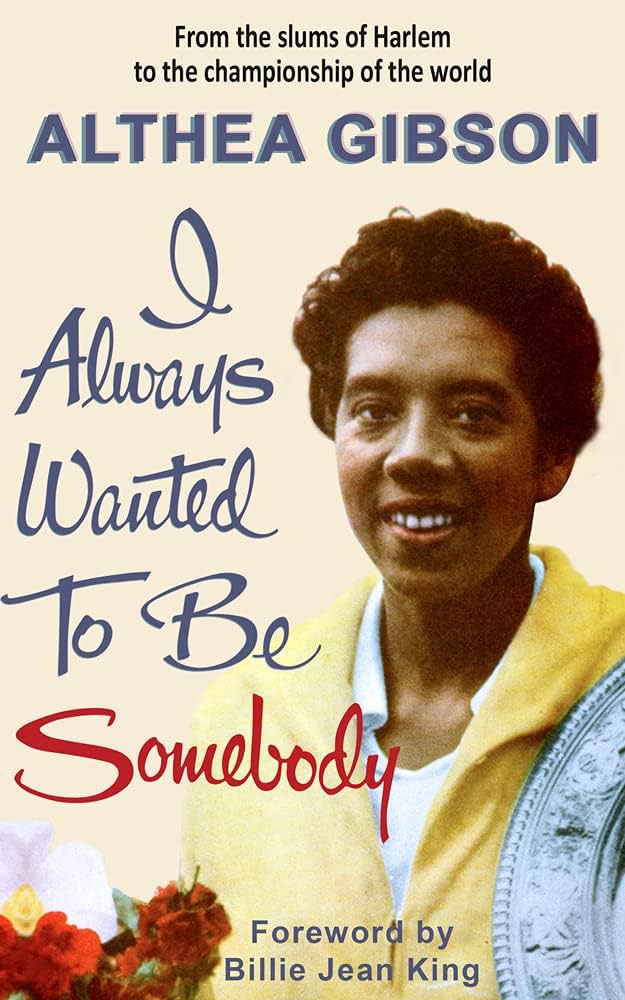

Kid books we liked:


Web!
We have a Pinterest board for every subject, it’s a glorious place to dive into some rabbit Holes! Here is Althea’s!
Alice Marble was an important figure in Althea’s story… but she was also one for Wonder Woman’s (and all women of history!)
Lady Boxing has a long history, here’s a place to start your tumble down this rabbit hole!
Rudyard Kipling’s poem, If, two lines of which are over the entrance to Centre Court at Wimbledon.
The history of “play streets” like the ones Althea learned paddle tennis on, how to visit Wimbledon
Smithsonian National Museum of African American History and Culture online exhibit about Althea, and she’s represented at the International Tennis Hall of Fame in Newport, Rhode Island (to access the museum’s Metaverse, go to the VISIT page and scroll down.)
Resilient Grace is an online retailer with a mission of telling the stories of historic, African American women (Susan has a few of her shirts including the Shirley Chisholm one that she wears when she votes!)

Moving Pictures
If Serena Williams can’t explain it so anyone can understand it, you expect us to? Here’s an article on how to score tennis. Godspeed.
There are a couple documentaries out there, Althea is on Peacock, and there is an American Masters, PBS one available on AppleTV+ and Prime (and maybe other services, that’s the two we watched.)
Quick links to our coverage of two previous subjects mentioned in Althea’s story: Babe Didrikson Zaherias and Fannie Lou Hamer
Our 2024 Field Trips to Austria and Paris are both sold out, and there are just a few spaces for our New York trip in September. There, we will also have a Locals’ Meet-up Dinner Cruise that’s open for reservations now. If you’re interested in any of these, please see Like Minds Travel for information and to sign up!
Break Music: Slow Cookin’ by Joe Smith and the Spicy Pickles; End Song: Play the Game by Lilly Wolf used by permission from iLicense Music.